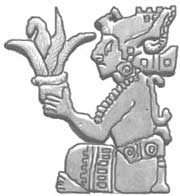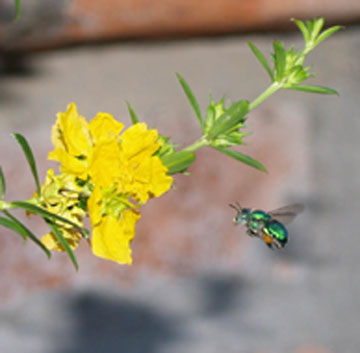Some Mexican Shamanic Plants
An Introductory Class
 This class covers the cultivation and propagation of, and the historical and practical uses of, the following Mexican Shamanic plants: Calea zacatechichi, Chocolate, Datura, Ololiuhqui, Salvia divinorum and Sinicuichi. There is a hands-on demonstration of propagation.
This class covers the cultivation and propagation of, and the historical and practical uses of, the following Mexican Shamanic plants: Calea zacatechichi, Chocolate, Datura, Ololiuhqui, Salvia divinorum and Sinicuichi. There is a hands-on demonstration of propagation.
The class is $100 pesos and class size is very limited. Recommended reading is Plants of the Gods, by Christian Ratsch and Richard Schultes. Plants will be available for purchase at a 25% discount at the end of the class.
This is an introductory, though very specialized class and is not recommended for those who do not have a sincere interest in Mexican shamanic plants. The class is taught in English.
The location is on the rooftop garden of the Theatrum Botanicum in Colonia Buenos Aires, Puerto Vallarta. Directions are emailed upon registration.

Calea zacatechichi, thle-pelakano (Maya, Leaf of god). The dried leaves of this plant were used by the Chontal Mayans of Tabasco State, Mexico, for obtaining visions during sleep.
Datura innoxia, toloache (Aztec, nodding). A dangerous shamanic plant used by many cultures in Mexico for divination.
Heimia salicifolia, sinicuiche (Aztec, Sun opener). The wilted leaves of this plant, crushed and fermented in water, were used as a sleep hallucinogen by the Aztecs in Mexico.
Salvia divinorum, ska pastora. The leaves of this sage, dried or fresh, were (are) made into a tea and drunk or the dried leaves are smoked or the fresh leaves are chewed to produce short-term, intense hallucinations by the Mazatec Indians of Oaxaca, Mexico.
Turbina corymbosa, Ololiuhqui (Aztec, That which causes turns). A morning glory relative whose seeds are used by many Mexican cultures to produce hallucinations.
Theobroma cacao, cacahuatl. (Aztec, chocolate). The seeds of this tree are prepared for use as a stimulant.